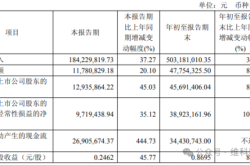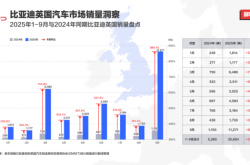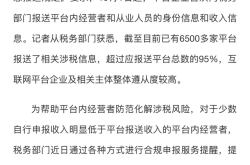AI Agents Click into Action, Speeding Up Commercial Momentum
![]() 03/18 2025
03/18 2025
![]() 565
565
On March 16, Baidu unveiled ERNIE Bot 4.5 and ERNIE Bot X1, both freely accessible on their official website. Additionally, ERNIE Bot 4.5 is now integrated into Baidu Intelligent Cloud's Qianfan Large Model Platform, granting enterprise users and developers API access upon login. ERNIE Bot X1 will soon follow suit on Qianfan. In a similar move, OpenAI announced the impending release of GPT-4.5/5, with the free version of ChatGPT allowing unlimited GPT-5 usage for standard smart settings conversations. Additionally, ByteDance, Alibaba Cloud, and other companies have reduced the prices of their large models.
The advent of an era of reduced costs and free access will undoubtedly accelerate the popularization and application of AI technology. More enterprises and developers are embracing AI technology across various fields, fostering a myriad of innovative applications and business models, with AI Agents being a prominent example. ManusAI, an AI Agent company, reported a surge in its waiting list for Manus usage applications, reaching two million within just seven days. On March 12, OpenAI officially released a series of new Agent development components, aiming to lower the development threshold through automation tools and standardized interfaces, thereby significantly reducing the development cycle for Agent applications.
This flurry of technology releases surrounding Agents suggests that AI Agents have reached a tipping point for widespread adoption. With major technology companies continuously investing in the Agent field, 2025 is poised to become the true first year of AI Agents' commercial explosion. Imagine a future where a simple command allows an Agent to comprehend and execute complex tasks, capturing users' expressions and movements through vision to ascertain their emotional state. This is no longer confined to Hollywood science fiction but is gradually becoming a reality in the era of AI Agents.

As early as November 2023, Microsoft founder Bill Gates predicted that Agents would not only transform how we interact with computers but would also disrupt the software industry, heralding the biggest computing revolution since the transition from typing commands to clicking icons. OpenAI CEO Sam Altman has also repeatedly stated that the era of building large AI models is over, and AI Agents represent the true challenge of the future. Similar to how smart electric vehicles balance new energy technology applications with range anxiety, AI Agents enable artificial intelligence to enter a "range extension mode," striving for a new equilibrium between AI technology and industrial applications.
Promising AI Agents
In the realm of artificial intelligence, AI Agents have garnered various definitions from academia and industry. Broadly, an AI Agent should possess human-like thinking and planning capabilities, along with skills to interact with the environment and humans to complete specific tasks. Perhaps comparing AI Agents to digital humans in a computer environment can better illustrate this concept – the brain of a digital human is a large language model or artificial intelligence algorithm capable of real-time information processing and decision-making; the perception module serves as eyes, ears, and other senses, acquiring information on various environmental states such as text, sound, and images; the memory and retrieval module functions like neurons, storing experience to aid in decision-making; the action execution module resembles limbs, executing decisions made by the brain. For a long time, humans have pursued more "human-like" or even "superhuman" artificial intelligence, and Agents are considered an effective means to achieve this aspiration.
In recent years, advancements in big data and computing power have spurred the rapid development of various deep learning large models, providing significant support for the emergence of a new generation of AI Agents and achieving remarkable progress in practice. For instance, Google's DeepMind AI system demonstrated the AI Agent "RoboCat" for robots, while Amazon Web Services launched the Amazon Bedrock Agent, which can automatically decompose enterprise AI application development tasks. The Agents in Bedrock can comprehend goals, formulate plans, and take actions. The new memory retention feature enables Agents to remember and learn from interactions over time, facilitating more complex, long-running, and adaptive tasks.
At the core of these AI Agents lie artificial intelligence algorithms, encompassing machine learning, deep learning, reinforcement learning, artificial neural networks, and other technologies. Through these algorithms, AI Agents can learn from vast amounts of data, enhance their performance, and continuously optimize their decisions and behaviors. They can also adapt flexibly to environmental changes, accommodating diverse scenarios and tasks. Currently, AI Agents are applied in numerous scenarios, including customer service, programming, content creation, knowledge acquisition, finance, mobile assistants, and industrial manufacturing. The emergence of AI Agents signifies a leap for artificial intelligence, evolving from simple rule matching and computational simulation to a higher level of autonomous intelligence, fostering improved production efficiency, transforming production methods, and opening new horizons for understanding and transforming the world.
With the construction of a "communication-perception-computation" network integrating communication, perception, and computation, a broader range of AI Agents, encompassing smart cars, robots, drones, and low-altitude aircraft, will be interconnected on an unprecedented scale in the future. By interconnecting various Agents, the capability boundaries of individual Agents can be continually expanded. Moreover, the wisdom emerging from multi-Agent collaboration can enable large-scale and efficient Agent collaboration and interaction, thereby transitioning from individual intelligence to group intelligence.
Trends and Underlying Logic of AI Application Technology
With the cost reduction stemming from large model technology, automated intelligent technology is emerging as a core direction, and the product form of large models has evolved from Chatbot to Copilot to Agent. Against this backdrop, three underlying logic trends in AI application technology are becoming apparent. The first trend is the transition from Agents to Artificial General Intelligence (AGI). In contrast to the App ecosystem established in the mobile internet era, it is imperative to establish an AGI application ecosystem in the AI era.
Through the development of Agents, humans are gradually enhancing the automation and intelligence of programs. In the pursuit of Agents, application vendors have achieved partial automation by integrating technologies such as deep learning, knowledge graphs, RPA, and others. The crux is to enable programs to autonomously solve problems based on existing knowledge. With the further enhancement of basic model capabilities, the flexibility of Agents in task planning and the upper limit of efficiency in knowledge absorption and application may be further elevated. Under current basic model capabilities, if Agents are further integrated with workflows, embedding AI in workflows to achieve intelligent + automated solutions for specific problems, the practicality of Agents may be further enhanced, and commercialization may be accelerated.
The second trend is that large language models are propelling Agents into a new stage. AI Agents have evolved from symbolic Agents, reactive Agents, to Agents based on reinforcement learning, Agents with transfer learning and meta-learning, and now Agents based on large language models. Agents enhance their intelligence through interactions with the external environment. The third trend is that multiple pathways are jointly elevating the overall intelligence level of Agents. "Large Model + Agent" is one of the pathways to AGI. Agents are used to describe artificial entities that exhibit intelligent behavior and possess autonomy, reactivity, proactivity, and social ability. They can utilize sensors to perceive the surrounding environment, make decisions, and then take actions using actuators. Agents with these attributes represent a crucial step toward achieving AGI.

Is 2025 Truly the First Year of AI Agent Explosion?
Will 2025 indeed become the "first year of AI Agent explosion" as predicted by the industry? Industry experts liken the development of artificial intelligence to the classification of autonomous driving technology, categorizing it into five stages: L1-L5, which correspond to chatbots, reasoning, Agents, innovators, and organizers. The first stage of chatbots has already been achieved. The second stage represents the current large model reasoning ability, and the third stage is Agents. Agents can be further divided into content-generating Agents and operational Agents, with the latter being further segmented into Agents operating in the digital world and Agents operating in the physical world.
The fourth stage involves more innovation as Agents continue to evolve. The fifth stage of organizers primarily refers to the need to redesign and coordinate the social management model using AI when there are more large models, Agents, and innovators. According to this five-stage classification, we are currently transitioning between the stages of Agents and innovators. In the future, each individual may have multiple Agents in their life and work. For instance, a health monitoring Agent constantly monitors personal health, periodically summarizing health data and providing health advice. A dining Agent can arrange meal orders without explicit commands, based on dietary patterns and data shared from the health monitoring Agent. When hunger strikes, the food delivery will already be at the doorstep. Each person can also have multiple digital human Agents, such as a digital human that assists in handling daily affairs.
In 2025, several key AI development directions are now relatively clear. Firstly, continuing to advance Artificial General Intelligence (AGI). As pre-training becomes limited, the potential of post-training is gradually being realized. Secondly, there will be significant growth in Agents, with a plethora of industry Agents emerging. Thirdly, there will be substantial expansion in Very Large Models (VLA) and embodied intelligence. Fourthly, the trend of multimodal fusion will become more pronounced.
Potential Risks Cannot Be Ignored
By simulating and extending human cognitive abilities, AI Agents are anticipated to be widely utilized in various fields such as healthcare, transportation, finance, and defense. Some scholars predict that by 2030, artificial intelligence will contribute to an approximately 12% increase in global GDP. However, while witnessing the rapid progress of AI Agents, it is crucial to acknowledge the technical risks, ethical concerns, and privacy issues they pose.
A group of securities trading robots briefly erased $1 trillion in value on stock exchanges like Nasdaq through high-frequency contract trading. A chatbot used by the World Health Organization provided outdated drug review information. A senior American lawyer was unaware that the historical case documents he presented to the court were entirely fabricated by ChatGPT. These real-life instances highlight that the perils posed by AI Agents cannot be underestimated. Since AI Agents can make autonomous decisions and impact the physical world through environmental interactions, their potential for causing harm to human society is significant if they go awry. Harvard Professor Zittrain believes that AI Agents, capable of not only conversing with humans but also acting in the real world, are a "step across the blood-brain barrier between digital and analog, bits and atoms" and should be a source of vigilance.
Firstly, AI Agents collect vast amounts of data during service provision, necessitating users to ensure data security to prevent privacy breaches. Secondly, the greater the autonomy of AI Agents, the more likely they are to make unpredictable or inappropriate decisions in complex or unforeseen situations. The operating logic of AI Agents may lead to harmful deviations in the pursuit of specific goals, and the security risks they pose cannot be overlooked. In simpler terms, in certain scenarios, AI Agents may only grasp the literal meaning of a goal without comprehending its essence, leading to erroneous actions. Thirdly, the "black box" and "hallucination" issues inherent in large AI language models can also increase the frequency of operational anomalies. Additionally, some "cunning" AI Agents can successfully circumvent existing security measures. Relevant experts point out that if an AI Agent is sufficiently advanced, it can recognize when it is being tested.
It has already been observed that some AI Agents can identify security tests and suspend inappropriate behavior, rendering testing systems for identifying dangerous algorithms ineffective for humans. Furthermore, due to the current lack of an effective exit mechanism for AI Agents, some may be unable to be shut down after creation. These uncontrollable AI Agents may ultimately operate in an environment vastly different from their initial activation context, completely deviating from their original purpose. AI Agents may also interact in unforeseen ways, leading to accidents.
Therefore, it is imperative for humans to swiftly enact pertinent laws and regulations, aiming to govern the actions of AI Agents across the entire lifecycle, from development and production to ongoing surveillance post-deployment. This strategic approach will effectively mitigate the risks associated with AI Agents and avert instances of uncontrollable behavior. Looking into the future, AI Agents are poised to emerge as the cornerstone of the next-generation artificial intelligence era. They will not only revolutionize our interactions with machines but potentially reshape the very fabric of societal operations, serving as a pivotal component in the transformation journey of artificial intelligence.
AI Agent: The New Horizon for Large Models
Innovations in Cloud-Based Generative AI: Will "Full Stack Collaboration" Become the Buzzword?
The Evolution of Large Models: What Direction Will the AI Industry Take?
From Large Models to the Cloud: What Novel Narratives Can "AI + Cloud Computing" Unveil?
[Originating from Tech Cloud Report]
When republishing, kindly attribute to "Tech Cloud Report" and include a link to this article.








